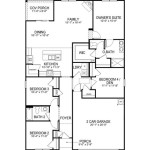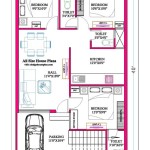Sears Craftsman Style Home Plans: A Detailed Examination
The Sears, Roebuck and Co., during the early 20th century, revolutionized the American housing market by offering “kit homes” – pre-cut and readily assembled houses delivered directly to the homeowner. Among the most popular styles offered was the Craftsman, reflecting the architectural trends of the time. These Sears Craftsman style home plans provided an accessible path to homeownership for a burgeoning middle class and helped to shape the landscape of American suburbs.
The Craftsman architectural style emerged as a counter-response to the ornate and mass-produced designs of the Victorian era. It emphasized simplicity, honesty in construction, and the use of natural materials. This ethos resonated deeply with many Americans seeking a more authentic and grounded living environment. Sears recognized this demand and incorporated the Craftsman aesthetic into numerous house plans, making it available to a wider segment of the population.
Sears didn't invent the Craftsman style, but they democratized it. Through their catalog, they presented beautifully rendered images and detailed floor plans, enticing prospective homeowners with the promise of an affordable, well-designed home. The company's efficient manufacturing and distribution channels allowed them to offer these homes at a competitive price, further contributing to their widespread popularity.
Key Elements of Sears Craftsman Style Homes
Sears Craftsman homes, while varying in size and specific design, shared several defining characteristics that contributed to their overall appeal and recognizability. Understanding these key elements provides valuable insight into the architectural principles that defined this style and the reasons for its enduring popularity.
One of the most prominent features was the low-pitched roof, often with wide, overhanging eaves. These deep eaves offered protection from the elements and contributed to the horizontal emphasis characteristic of the Craftsman style. The roofs were often gabled, with triangular pediments facing the street, adding a sense of stability and visual interest.
Porches were another defining element, frequently extending across the front of the house. These porches were designed to be welcoming and inviting, providing a space for relaxation and interaction with the neighborhood. They were often supported by substantial square or tapered columns, sometimes resting on brick or stone piers. These columns, often with exposed rafter tails beneath the porch roof, reinforced the emphasis on structural honesty that was central to the Craftsman aesthetic.
The exterior cladding of Sears Craftsman homes often incorporated natural materials such as wood siding, brick, or stone. Clapboard siding was a common choice, providing a clean and classic look. Shingle siding, particularly in the gables or upper stories, added texture and visual interest. The use of contrasting materials, such as brick on the foundation and wood siding above, further enhanced the visual appeal.
Windows in Sears Craftsman homes were typically double-hung, with multi-pane upper sashes and single-pane lower sashes. This window configuration allowed for efficient ventilation and provided a classic Craftsman look. Window trim was often simple and unadorned, reflecting the emphasis on functionality and clean lines. Many homes also featured prominent dormers, adding light and ventilation to the upper stories.
Interior features of Sears Craftsman homes typically included open floor plans, built-in cabinetry, and exposed structural elements. The open floor plans created a sense of spaciousness and allowed for better flow between rooms. Built-in bookcases, cabinets, and window seats provided storage and added character to the homes. Exposed beams, rafters, and other structural elements showcased the craftsmanship and emphasized the honesty of construction.
Fireplaces were often a focal point of the living room, providing warmth and a gathering place for the family. These fireplaces were typically constructed of brick or stone, with simple mantels that reflected the overall design aesthetic. The fireplace provided a visual anchor for the room and reinforced the sense of comfort and security that was so important in the Craftsman style.
The Variety of Sears Craftsman Home Plans
While sharing common characteristics, Sears offered a wide variety of Craftsman style home plans, catering to different budgets and family sizes. These plans ranged from small bungalows to larger two-story homes, offering a range of options to prospective homeowners. The diversity of plans ensured that there was a Sears Craftsman home to suit a wide range of needs and preferences.
The "Alhambra" was one of the more popular models, featuring a spacious floor plan with a large living room, dining room, and multiple bedrooms. It was designed for larger families and offered ample space for both living and entertaining. Its prominent front porch and well-proportioned facade made it a visually appealing and desirable home.
The "Vallonia" was a smaller, more affordable option, perfect for first-time homebuyers or smaller families. It featured a compact floor plan with a living room, dining room, kitchen, and two bedrooms. Despite its smaller size, it still incorporated many of the key elements of the Craftsman style, such as a low-pitched roof, overhanging eaves, and a welcoming front porch.
The "Kilbourne" represented a mid-sized option, offering a balance between affordability and space. It featured a living room, dining room, kitchen, and three bedrooms. Its design incorporated many of the classic Craftsman details, such as exposed rafter tails and a prominent front porch with tapered columns.
Sears also offered customizable options, allowing homeowners to modify the plans to suit their specific needs and preferences. These modifications could include changes to the floor plan, the addition of extra rooms, or the alteration of exterior details. This flexibility made Sears Craftsman homes even more appealing, as homeowners could tailor them to their individual requirements.
The Sears catalog provided detailed descriptions and illustrations of each home plan, making it easy for prospective buyers to visualize their future home. The catalog also included information on the cost of the various models, as well as the materials included in the kit. This transparency and accessibility were key to Sears' success in the kit home market.
The Lasting Legacy of Sears Craftsman Homes
The impact of Sears Craftsman homes on American architecture and suburban development is undeniable. Thousands of these homes were built across the country, and many still stand today, serving as a testament to their enduring quality and design. Their influence can be seen in the architecture of countless homes and neighborhoods, shaping the landscape of American suburbs.
These homes represent a significant chapter in the history of American housing, showcasing the democratization of design and the accessibility of homeownership. They provided an affordable and well-designed option for families seeking a comfortable and stylish home. The quality of materials and construction ensured their longevity, allowing many of these homes to survive for over a century.
Today, Sears Craftsman homes are often sought after by those seeking a vintage home with character and charm. They offer a tangible connection to the past and a sense of history that is difficult to replicate in modern construction. The unique architectural details and quality craftsmanship make them a desirable and valuable asset.
Restoring and preserving Sears Craftsman homes has become a popular hobby, with many homeowners taking pride in maintaining and enhancing these historic structures. The restoration process often involves researching the original plans, sourcing authentic materials, and carefully repairing or replacing damaged elements. This dedication to preservation ensures that these homes will continue to stand as a reminder of their important place in American history.
The availability of original Sears catalogs and blueprints has made the restoration process easier, allowing homeowners to accurately replicate the original design and details. These resources provide valuable information on the materials, finishes, and construction techniques used in the original homes. This historical data is crucial for ensuring an authentic and accurate restoration.
Sears Craftsman homes continue to inspire architects and designers today, serving as a model for sustainable and aesthetically pleasing housing. The emphasis on natural materials, simple design, and quality craftsmanship remains relevant in contemporary architecture. The principles embodied in these homes can be applied to modern construction, creating homes that are both beautiful and functional.
The legacy of Sears Craftsman homes extends beyond their physical presence. They represent a time when homeownership was more accessible and when design was valued for its simplicity and honesty. Their impact on American culture and architecture is undeniable, and their enduring popularity is a testament to their timeless appeal. These homes stand as a reminder of the power of good design and the importance of preserving our architectural heritage.

Homes Of Today Sears Kit Houses 1932

Vintage Small House Plans 1923 Sears Brookside Craftsman Style Bungalow Kit

Sears Modern Homes 1930 Pg56 Bedford

Craftsman House Plans Home Floor Monster

Craftsman House Plans Home Floor Monster

1916 Sears Roebuck Modern Home No 264b206 997

Art Now And Then The Craftsman Style

Craftsman Style Floor Plans Historic American Homes Brand

Sears Modern Homes House Kits From Catalogs Hooked On Houses

Accessibility Tools








